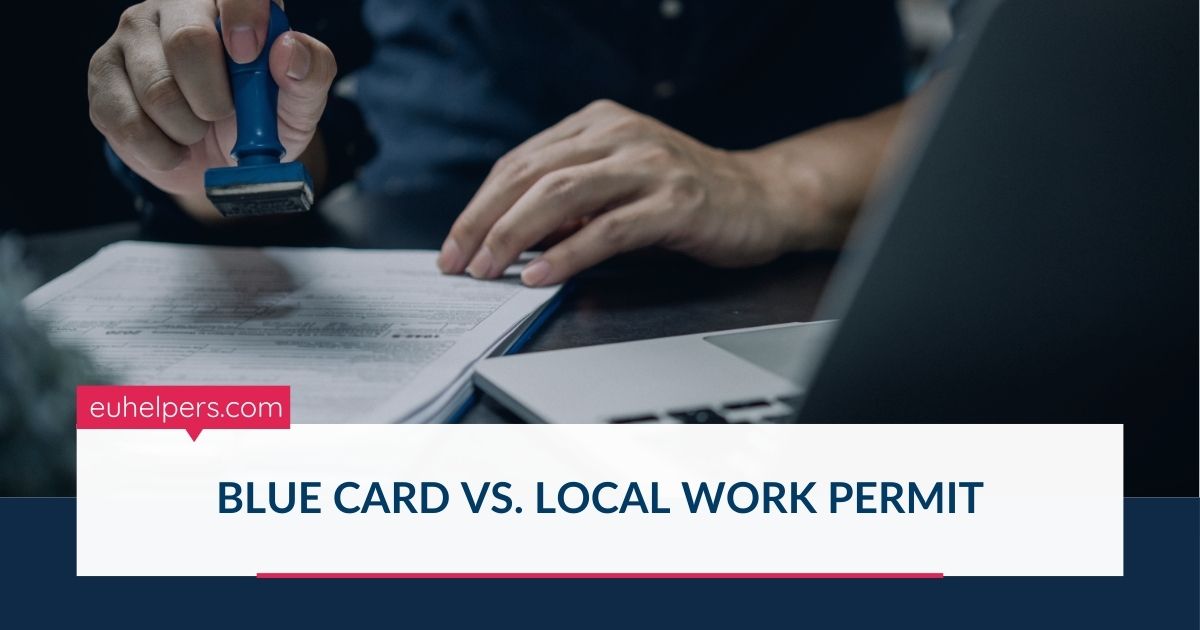
When it comes to working in the European Union, particularly in Germany, foreign professionals often face a choice between applying for an EU Blue Card or a local work permit. While both options allow non-EU citizens to live and work legally in the country, they serve different purposes and come with distinct eligibility criteria, benefits, and application processes.
Understanding the EU Blue Card
The EU Blue Card is a residence and work permit designed specifically for highly skilled non-EU professionals. It is part of an EU-wide initiative aimed at attracting global talent to strengthen the European labor market, especially in fields that face skill shortages.
Key Features of the EU Blue Card:
-
Target Group: Highly qualified professionals with a university degree or equivalent.
-
Salary Requirement: Applicants must meet a minimum annual gross salary threshold, which may vary by country and sector.
-
Purpose: Attract and retain top international talent within the EU.
-
Benefits:
-
Faster pathway to permanent residency
-
Greater mobility across EU member states that participate in the Blue Card scheme
-
Streamlined procedures for family reunification
-
-
Application Process: Generally fast-tracked and more straightforward for eligible candidates.
Understanding the German Local Work Permit
Germany also offers a variety of local work permits that are more broadly accessible to different categories of workers. These include skilled trades, vocationally trained professionals, and freelancers, not just university graduates.
Key Features of a German Work Permit:
-
Target Group: Skilled workers, including those in shortage occupations (e.g., nursing, IT, engineering), and freelancers.
-
Salary Requirement: Often lower than the EU Blue Card, particularly in high-demand sectors.
-
Purpose: To fill gaps in the national labor market and support various employment needs.
-
Benefits:
-
Flexibility in terms of job roles and employment types
-
Suitable for individuals without a university degree but with vocational training or relevant experience
-
-
Application Process: Typically standard, and may take longer than the Blue Card process depending on the case.
Key Differences at a Glance
| Feature | EU Blue Card | German Work Permit |
|---|---|---|
| Target Group | Highly skilled workers with a university degree | Broad range of skilled workers, including non-graduates |
| Salary Requirement | High (minimum threshold applies) | Lower, varies by occupation and demand |
| Mobility | Easier movement within participating EU countries | Limited to Germany unless reapplying elsewhere |
| Path to Residency | Fast-track to permanent residency | Available but may take longer |
| Application Process | Fast-tracked for eligible applicants | Standard, with more variation depending on role |
| Flexibility | Geared towards specific high-level roles | More adaptable to different sectors and employment types |
Which One Should You Choose?
-
Choose the EU Blue Card if you are a university graduate in a high-demand field and meet the salary threshold. It’s ideal for those who want to work across different EU countries in the future and aim for long-term settlement.
-
Opt for a local German work permit if your skills are in demand but don’t meet the strict Blue Card criteria. This route is particularly useful for technical workers, vocational professionals, and freelancers.
Both the EU Blue Card and the German work permit offer valuable pathways for non-EU citizens to work in Europe, but they are tailored to different profiles. By understanding the distinctions and aligning your choice with your qualifications and career goals, you can select the option that best supports your professional journey in Germany or beyond.
